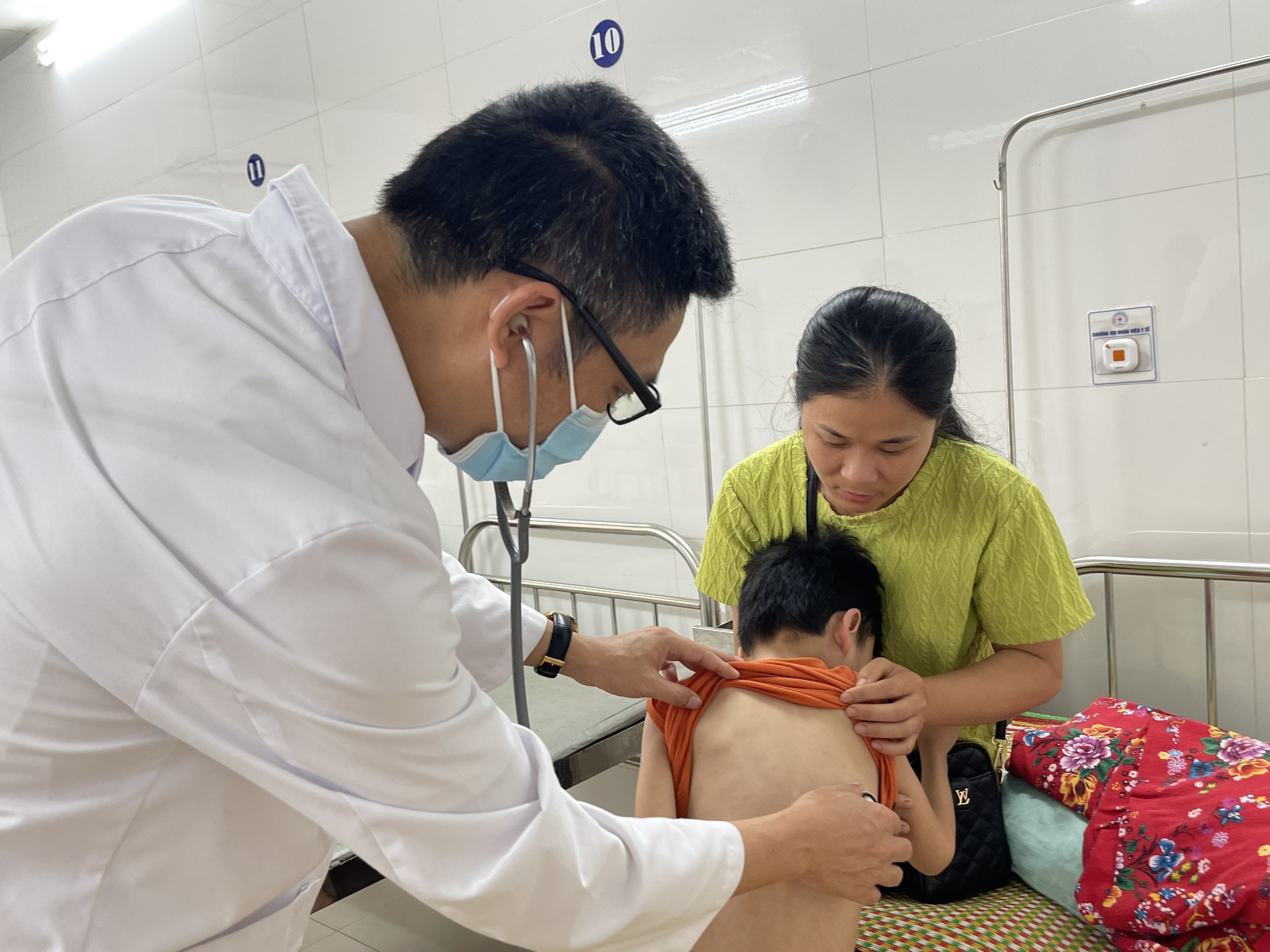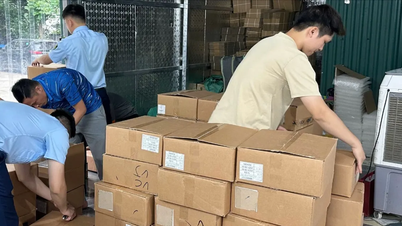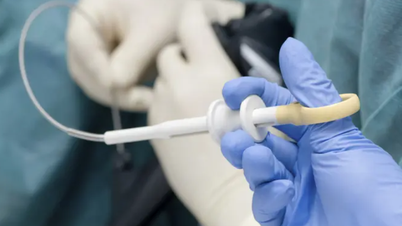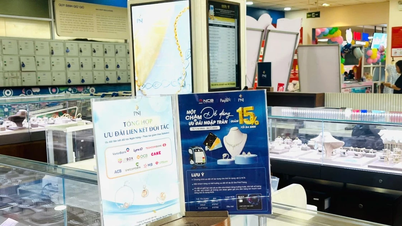Dr. Phung Xuan Hach, Dang Van Ngu Hospital, said that the hospital had just admitted a 7-year-old boy who was diagnosed with lung flukes. A few months ago, the boy had symptoms of headache and vomiting and his family took him to the provincial hospital for examination. After that, the patient was transferred to the National Children's Hospital for treatment due to suspected brain damage. The patient was scanned, had some tests done and was found to have pleural effusion. After that, the child was treated for pleural effusion and was discharged from the hospital.

Doctors are treating a boy with lung flukes. (Photo by Loan Hong).
However, recently, he continued to have chest pain and difficulty breathing, so his family took him to the provincial hospital and he was transferred to Dang Van Ngu Hospital. The results of the examination, tests, and X-rays showed that the boy had lung flukes.
Main symptoms of lung fluke disease:
Patients often have a cough that lasts for months or years; progressing in acute episodes. Coughing and expectoration of blood-tinged sputum.
There may be chest tightness and difficulty breathing.
Lung sounds include rales and wheezing.
There is a 3-reduction syndrome at the base of the lung when there is pleural effusion (if the worms are in the pleura they cause pleural effusion).
In cases where the worms are localized in other organs, clinical symptoms are complicated, depending on the parasitic organ.
According to Dr. Hach, people infected with lung flukes often have symptoms of coughing a lot, coughing up phlegm, phlegm mixed with blood, and possibly chest tightness and difficulty breathing. This makes it easy for patients to confuse it with other diseases such as tuberculosis, pneumonia, bronchitis, etc. Patients infected with lung flukes, if not diagnosed and treated promptly, will have serious sequelae in the lungs.
Dr. Hach said that lung fluke disease has been identified to be circulating in some northern provinces: Lai Chau, Son La, Hoa Binh, Lao Cai, Yen Bai, Ha Giang , Lang Son, Nghe An...
The development cycle of lung flukes is from lung flukes laying eggs, the eggs follow the phlegm out of the throat or follow the stool when swallowing phlegm, the eggs fall into the water. In the water environment, the eggs develop and hatch into ciliated larvae. The ciliated larvae enter snails to develop into tailed larvae. The tailed larvae leave the snails to swim freely in the water, penetrate freshwater shrimp and crabs, lose their tails and develop into cystic larvae in the meat and viscera of shrimp and crabs.
People (or animals) eat shrimp or crabs with uncooked cysticerci such as grilled crab, crab paste, or drink raw crab juice. After eating, the larvae enter the stomach and intestines, penetrate the digestive tract wall into the abdomen, then in pairs penetrate the diaphragm and pleura into the bronchi to nest there.
The time from ingestion of larvae to the appearance of adult worms is about 5-6 weeks.
To prevent lung fluke disease, Dr. Hach recommends: People should always eat cooked food and drink boiled water. To prevent lung fluke disease, absolutely do not eat uncooked crab or shrimp; Manage waste such as phlegm, feces or pleural fluid, keep the environment clean; Solve the pathogen by early detection and specific treatment for patients.
Source: https://www.baogiaothong.vn/tre-7-tuoi-dau-tuc-nguc-kho-tho-vi-nguyen-nhan-bat-ngo-192240625162532354.htm






























































































Comment (0)